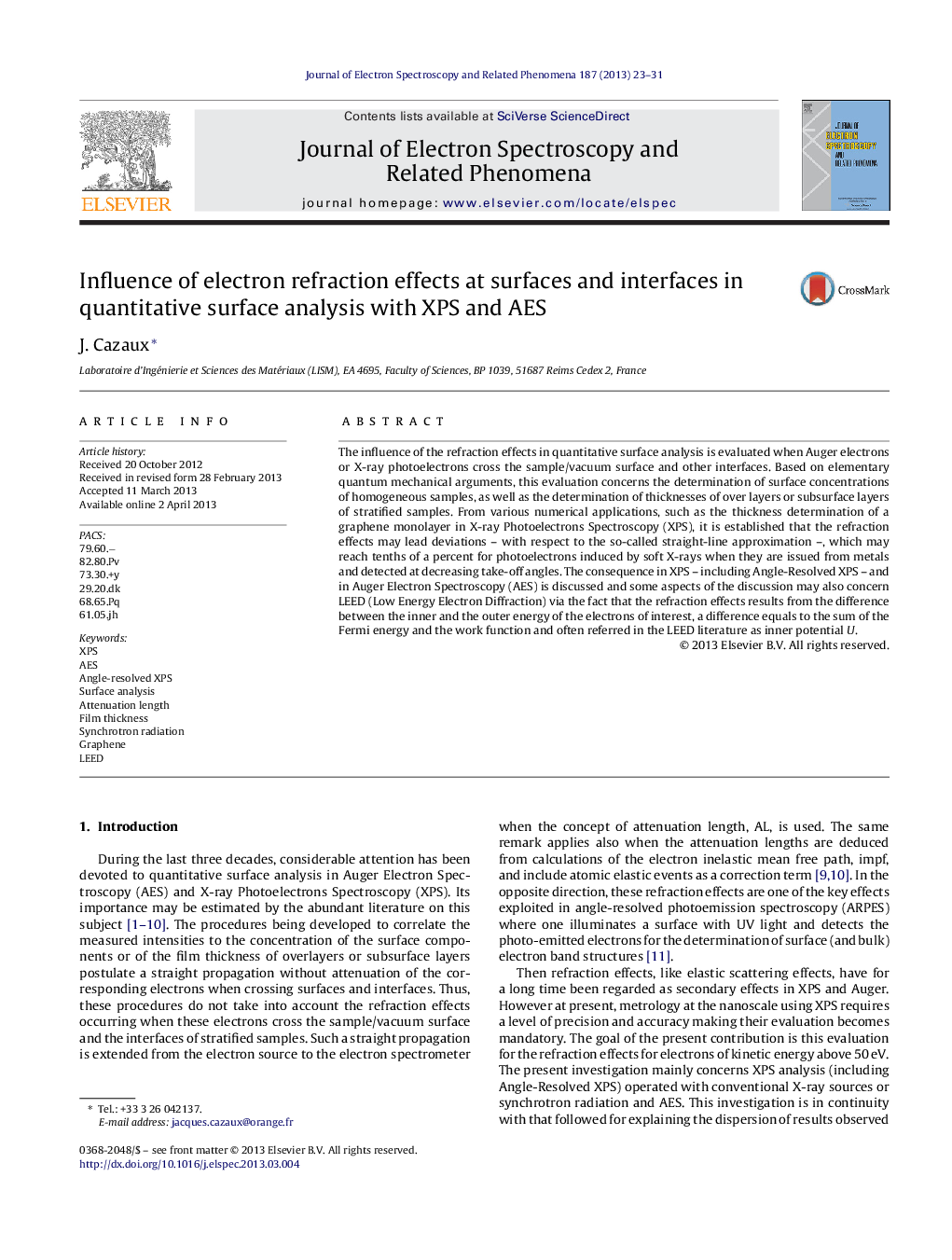| Article ID | Journal | Published Year | Pages | File Type |
|---|---|---|---|---|
| 5396206 | Journal of Electron Spectroscopy and Related Phenomena | 2013 | 9 Pages |
Abstract
The influence of the refraction effects in quantitative surface analysis is evaluated when Auger electrons or X-ray photoelectrons cross the sample/vacuum surface and other interfaces. Based on elementary quantum mechanical arguments, this evaluation concerns the determination of surface concentrations of homogeneous samples, as well as the determination of thicknesses of over layers or subsurface layers of stratified samples. From various numerical applications, such as the thickness determination of a graphene monolayer in X-ray Photoelectrons Spectroscopy (XPS), it is established that the refraction effects may lead deviations - with respect to the so-called straight-line approximation -, which may reach tenths of a percent for photoelectrons induced by soft X-rays when they are issued from metals and detected at decreasing take-off angles. The consequence in XPS - including Angle-Resolved XPS - and in Auger Electron Spectroscopy (AES) is discussed and some aspects of the discussion may also concern LEED (Low Energy Electron Diffraction) via the fact that the refraction effects results from the difference between the inner and the outer energy of the electrons of interest, a difference equals to the sum of the Fermi energy and the work function and often referred in the LEED literature as inner potential U.
Keywords
Related Topics
Physical Sciences and Engineering
Chemistry
Physical and Theoretical Chemistry
Authors
J. Cazaux,
